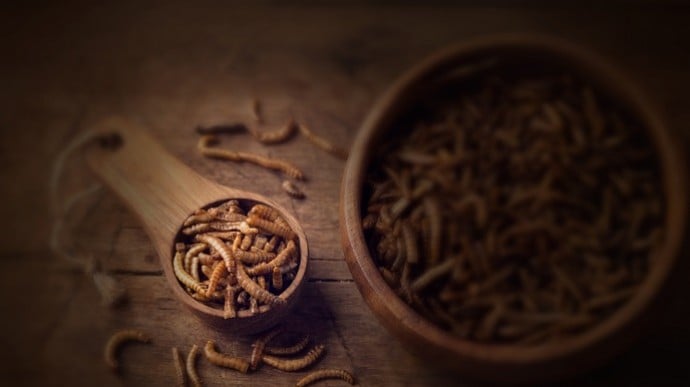Southern Africa’s Nguni, Afrikaner, Drakensberger and Bonsmara cattle are unique and well suited to the climate of southern Africa. University of Pretoria researchers are using the history and favourable genetics of these breeds to increase productivity and food security.
Professor Este van Marle-Koster, an animal breeding expert at UP’s Department of Animal Science, is putting together a detailed picture of the genetics of southern African cattle breeds.
By identifying which genes code for their most favourable traits, like growth and resilience, researchers can help farmers selectively breed more productive animals while conserving the features that make these breeds special.
“As average temperatures rise, we need animals that are adapted to heat, such as the Nguni and the Afrikaner, which have the potential to grow economies and reduce hunger,” she says. “We need to quantify that potential by using genetic sequencing data to find the genes associated with adaptive traits like resilience to heat stress.”
Southern Africa has about 150 recognised indigenous breeds well suited to the region’s hot and dry conditions.
The Nguni breed has a few ecotypes adapted to specific areas in southern Africa, including the Shangaan, Pedi, and Nkone. However, Prof Van Marle-Koster says that some of these ecotypes are in danger of extinction from indiscriminate crossbreeding, having less than 1 000 breeding individuals according to the Food and Agriculture Organisation (FAO).
“The Bonsmara breed has the most genotyped animals to date at 5 000 individuals, which is very limited as elsewhere in the world breeds such as Hereford and Angus have millions of animals genotyped,” she says.
To get a better picture of the genetic potential of these indigenous breeds, Prof Van Marle-Koster sought to trace their origins by going through over 2 000 years of southern African history.
She worked with Dr Judith Sealy, a historian from the University of Cape Town, who could weave the dimension of time into the complex tapestry of indigenous breeds in southern Africa.
“I think that this context of history is important as we often forget to tell actual stories in our science,” Prof Van Marle-Koster says.
According to the archaeological record, it took a long time for cattle to be raised in southern Africa’s punishing climate. The first traces of cattle in the region date back to around 2 000 years ago, whereas cattle in other parts of Africa were present more than 4 500 years ago.
Prof Van Marle-Koster hopes that the long history of cattle in the region can also be reflected in their genetic data.
For instance, they found that in the 17th century, Dutch settlers used Sanga cattle from the Khoekhoe, and selectively bred them as draught animals, which then brought about the Afrikaner breed.
So far, Prof Van Marle-Koster and her team have published their review in the Sustainability Journal detailing the known breeds and ecotypes of southern Africa, as they put plans in place to do genomic sampling in South Africa, Namibia and Botswana. With this work, the researchers will use the resulting genomic data to help farmers breed more resilient and productive cattle.
With a more detailed genomic picture identifying the unique breeds like the Nguni, Prof Van Marle-Koster’s research will be able to conserve these ecotypes from being crossbred out of existence, taking their adaptive traits with them.

Professor Este van Marle-Koster,
August 13, 2021

Professor Esté van Marle-Köster graduated with a degree in Animal Science from the University of Pretoria (UP) in 1986. She also holds an honours in Animal Science and an MSc (Agric), having conducted her postgraduate studies part-time while working full-time in the industry.
Prof Van Marle-Köster returned to UP to do her PhD, and joined the University as a lecturer in July 1995. She has been doing research at UP for the past 27 years.
“I’ve always believed that I joined the best Animal Science Department in South Africa when I came back to UP,” she says. “I was given the opportunity to do the first molecular genetics work applied to livestock as an animal scientist. Our department was the first in the country to teach a module in applied molecular genetics. We hosted the first livestock genomic workshop in South Africa, which led to the establishment of a genomic livestock consortium for beef cattle.” It also led to the SA Beef genomic programme (BGP), where Prof Van Marle-Köster coordinated the research committee.
Animal science is all about responsible and sustainable food production, she says. In her research, Prof Van Marle-Köster focuses on traits related not only to production, but to the welfare of animals too. Sound animal husbandry results in longevity in animals and increases the overall efficiency of the system, she adds; it also improves sustainability.
“I am interested in what we refer to as ‘new’ traits/phenomes. They are not really new, but difficult to measure, so we are searching for new ways to measure. For example, we search for ways to measure claw traits in dairy cattle, which is difficult to do, but if we could measure using precision livestock farming techniques, I can have access to large datasets to apply in research. That way, we can select cattle with ‘good’ claws and manage the environment of these cows for improved claw quality.”
As to how her research contributes to the betterment of the world, she says: “The answer to a better world with regard to livestock production and feeding the human population lies in multidisciplinary projects, where we can share resources and find solutions to improve the whole value chain.”
Within her department, she leads applied genetic research in beef and dairy cattle. She is project leader for the African Genomics Project, for which she and her research team are collaborating with the Ludwig Maximilian University of Munich and Queen Mary University of London to sequence local beef cattle genomes. The aim is to investigate underlying genetic mechanisms for adaption in these breeds.
In terms of cross-faculty research at UP, she is collaborating with Prof André Ganswindt, Director of UP’s Mammal Research Institute (MRI), on studies about animal behaviour and physiology. Prof Van Marle-Köster is also involved in the PLF project with Prof Herman Myburgh of the Department of Electrical Engineering; this project aims to automate body condition scoring and detect lameness in dairy cows.
Her latest project is to do with monitoring the behaviour and water intake of commercial feedlot cattle, and measuring their stress. This is another collaboration with Prof Ganswindt and the MRI.
Prof Van Marle-Köster’s father was also an animal scientist, who inspired her to think beyond the “basic science” to see that what is done in livestock production has consequences.
“You cannot do animal science in isolation,” she says. “Our research will contribute only if there is context.”
She hopes to inspire young animal scientists with her research, which matters, she says, because it provides a good base for postgraduate students and will hopefully lead to more opportunities for them. Her advice to school learners or undergraduates who are interested in her field is to read widely for a better understanding of the world before narrowing their interests down.
In her spare time, Prof Van Marle-Köster enjoys listening to music, reading and going for long walks.
 Story
Story
Cricket à la king? How about a yellow mealworm burger? Foods that may previously have evoked a ‘yuck’ response are now firmly on the menu. Research into edible insects by the Department of Zoology and Entomology at the University of Pretoria (UP) is exploring how to rear and harvest this food of the future.
 Story
Story
A single query to ChatGPT uses as much electricity as burning a light bulb for about 20 minutes. Multiply that by the millions of requests that this artificial intelligence (AI) chatbot receives each day, and the environmental impact is ominous.
 Story
Story
University of Pretoria (UP) researchers have found that the antioxidant content of certain types of tea can be likened to that found in recommended portions of fruit and vegetables.
Copyright © University of Pretoria 2025. All rights reserved.
Get Social With Us
Download the UP Mobile App